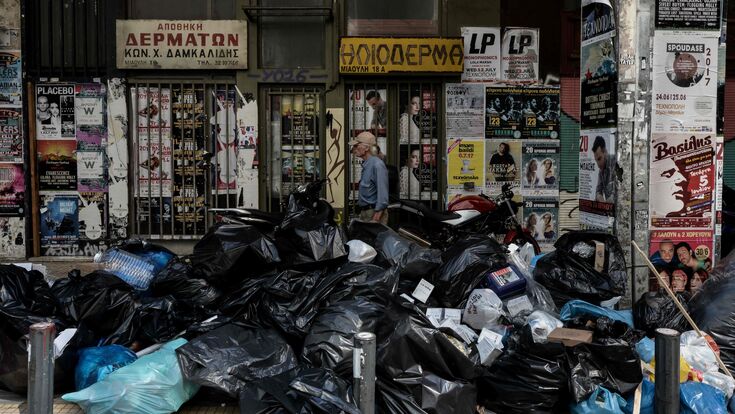Greece : Waste Management in Greece: A Herculean Task

Waste management has been recognised as one of the most severe problems in Greece’s environmental performance indices, suffering from a low level of organisation while relying predominantly on semi-controlled landfills until the end of the last century. Nevertheless, over the last two decades, solid waste management in Greece has undergone a remarkable improvement.
At national level, in 2018 a total of 5,523,809 tonnes of municipal solid waste were generated, compared to 5,277,209 tonnes in 2015 (a 4.7% increase in the amount generated compared to 2015). The per capita generation of MSW amounted to 514 kg/capita/year in 2018, while the corresponding EU average was 489 kg/capita/year. Disposal in sanitary landfills is still the main method of managing MSW (78.4% of generation in 2018); however, there has been a decreasing trend from 2015 onwards, mainly due to the gradual increase in recycling. In 2018, total recycling operations (including composting) constituted 20.1% of the management of MSW and was far behind the corresponding European average (approx. 47%). The percentage of energy recovery (oils, RDF, etc.) still accounts for a very small share of management (1.5% in 2018).
National Waste Management Plan
A new National Waste Management Plan (NWMP) was introduced and instituted in September 2020 (Government Gazette 185/A/29-09-2020) with an implementation period between 2020 and 2030. The aim of the new NWMP is to adopt the appropriate strategic directions so that the national waste management policy is implemented through a coherent network of plans, programmes, actions and projects, and the established objectives are achieved.
The new National Waste Management Plan defines the policy, strategies, axes and the qualitative and quantitative objectives of waste management in the individual waste streams, defining the actions and measures required to achieve the objectives set by national and European waste management legislation. The new plan also sets an ambitious target for reducing waste disposal to 10% by 2030, five years ahead of the European guidelines (10% by 2035).
The above goal will be achieved within the framework of national planning towards energy recovery. The plan encourages the construction of new treatment plants that will produce secondary fuel, biogas and electricity. The new NWMP proposes the construction of four waste-to-energy units with an estimated capacity of between 847,782 and 1,429,752 tonnes per year by 2030.
Following the approval of the National Waste Management Plan, the regional waste management plans developed by the country’s 13 regions are currently being reviewed, as are the local plans of all the municipalities.
Different scenarions
The new National Waste Management Plan evaluates two different scenarios (and an alternative one) for the construction of energy recovery plants which will treat residues from MSW treatment, residues from other streams (bulky waste, WEEE, wood and fabric) and possibly secondary fuels. The expected amount of waste to be utilised through waste to energy is 5,301,499 tonnes per annum (by 2030).
Scenario 1 estimates that residues generated from MSW treatment in MBT plants, residues from other stream treatment and sec- ondary fuel produced (SRF/RDF from MBTs or SRF/RDF/PDF from MRFs) from all Greek regions (ex- cept the island regions) will amount to 1,429,752 tonnes and will be sent to the energy recovery plants.
Scenario 2 predicts that the secondary fuel produced throughout the country (401,930 tonnes) will be diverted for utilisation from suitable energy-intensive industries, such as the cement industry, replacing traditional fossil fuels, while the residues generated from other streams from all Greek regions (except the island regions) will amount to 1,027,821 tonnes and will be sent to the energy recovery plants.
The alternative scenario is a variant of scenario 2 in terms of intermediate management of the organic fraction of residual MSW aggregates. In particular, in favour of computational security in terms of residue to final disposal, it has been assumed that the treated organic fraction of residues/mixed MSW, except for the part of the organic fraction in the mix to produce secondary fuel, is sent to energy recovery plants together with the residue of the MBT plants.
In the NWMP, it is pointed out that the construction of energy recovery plants should be pursued as competently as possible, which will enable the plants to be classified in the Recovery category (category R) rather than in the Disposal category (category D), according to the provisions in force, provided that this is possible based on the characteristics of the waste to be managed and the local conditions.

